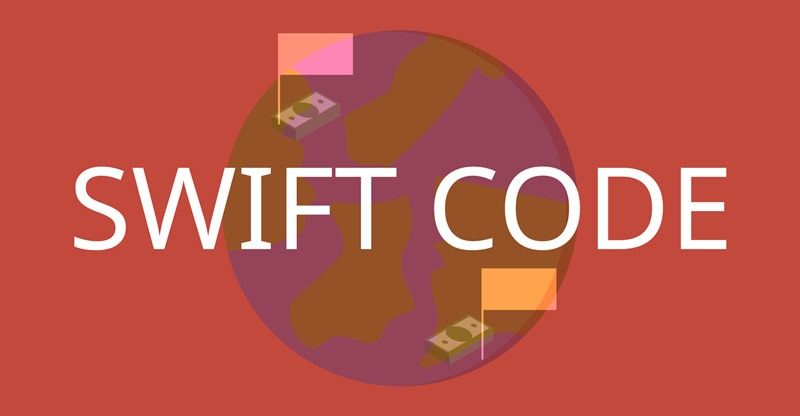What Happens If SWIFT Code Is Wrong?
When sending money overseas, you want to be sure that the payment will reach your preferred destination. That is where a SWIFT code comes in handy to help. It’s a unique set of characters that specifies the specific bank sending and receiving money transfers.
To ensure that your money gets into the right hand, you must provide the correct SWIFT code. This guide looks at what will happen when you provide your bank with the wrong SWIFT code for international fund transfers. But first, let’s look at what a SWIFT code is.
What is a SWIFT Code, and How Does it Work?
SWIFT stands for the Society for Worldwide Interbank Financial Telecommunications. So, all banks that perform international money transfers have unique SWIFT codes that identify them. As a result, it ensures that funds transfers across borders are secure.
So, what is a SWIFT code?
A SWIFT code consists of characters (letters and numbers) identifying a particular bank or financial institution internationally. It works as an ID that banks use to send or receive money and messages globally. Notably, it’s known as a Business Identifier Code (BIC).
The SWIFT code is beneficial when it comes to international money transfers. It helps the financial institutions establish the specific place they send money, including the city, country, and branch. So, that means you must know your bank’s correct SWIFT code.
What a SWIFT Code Looks Like
A SWIFT code has 8-11 characters that identify a particular bank, including the country where the bank operates and its branches. The code’s format is AAAABBCCDDD.
• AAAA (Bank Code): It’s a set of letters (A-Z) representing the bank itself. It’s often a shortened form of the bank’s name.
• BB (Country Code): It’s a set of letters (A-Z) representing the country where the bank operates.
• CC (Location Code): It’s a set of numbers (0-9) or letters (A-Z) representing the specific location of the bank’s head office.
• DDD (Branch Code): The branch code is a set of letters (A-Z) or numbers (0-9) indicating the branch of a particular bank in question.
NOTE: The Branch Code is optional, and that’s why some banks don’t add it to their SWIFT codes. As a result, they end up with a shorter SWIFT code with eight characters. However, they can replace the branch code with XXX.
What Happens When You Use a Wrong SWIFT Code for Transfers
When doing international money transfers, you need to use the correct SWIFT codes to ensure that your money reaches the preferred destination. However, issuing a wrong SWIFT code may delay the money transfer process.
So, what happens if your bank sends money to the wrong SWIFT code?
If you request your bank to transfer money to the wrong SWIFT code, it will subtract the funds from your account balance. It will then try sending the money using the SWIFT code you issued. The transfer will happen based on whether the code exists or not.
When the SWIFT code is non-existing, your bank will reverse the payment and credit back the money into your account. However, the refunding process might take some time and even results in additional costs.
What happens if the SWIFT code exists, but it’s the wrong one? In other words, it means you have sent your money to the wrong destination. In this case, you have to contact your bank as soon as possible and inform them about the mishap.
When the SWIFT code exists, the receiving bank will get the payment message. However, if the bank notices that it doesn’t manage the recipient’s account number, it will notify your bank that they cannot complete the transaction. As a result, your bank will put the money back into your account.
Any mistake you make when sending funds overseas can be very costly. For that reason, you must confirm the SWIFT code of your recipient’s bank before initiating the transfers. Then, you can ask the recipient or inquire directly from their banks.
If you realize you just provided the wrong SWIFT code when sending money, contact your bank immediately, and they will cancel the transaction. However, if it’s too late for them to cancel the transfer, you may have to get in touch with the receiving bank and request them to refund the money.
Common Mistakes to Avoid When Using the SWIFT Codes
Whenever you are submitting SWIFT codes to your bank, you need to avoid making the following mistakes. By doing so, you’ll ensure that your money gets into the right hand.
1. Typing Mistakes
Since the SWIFT codes are very long, you are likely to make mistakes when typing the characters one by one and doing it faster. Try copying and pasting the SWIFT codes from the source to the submission page to avoid this mistake.
2. Submitting Wrong Recipient Details
Besides providing the correct SWIFT code, you should ensure that the recipient’s details are accurate. That is when your bank asks you to give more information. Even if the SWIFT code is correct, the bank may reject the transfer if other details are wrong.
3. Using Incorrect SWIFT Code Formats
When sending money internationally, you should use the digital format for online money transfers. Most banks will not process your transfer when you utilize the print format with spaces between the characters.
Where to Find the Correct SWIFT Code for International Money Transfers
Now that you know the implications of using the wrong SWIFT code, it’s crucial to use the correct code to avoid inconveniences. Here is how to find the valid SWIFT code.
• Visit the official website of the recipient’s bank and search for “SWIFT code.”
• Contact your bank and ask the customer representative to give you the code.
• Check if your previous bank statements have the correct SWIFT codes.
• Get the SWIFT code on reliable SWIFT code websites like bankswiftcode.org.
Final Words
Whenever you are sending money overseas, you must ensure that you’ve provided the correct SWIFT code. That will ensure that your money reaches the right destination. If you give a wrong SWIFT code, the bank will have to return the funds to your account, which would be costly.



